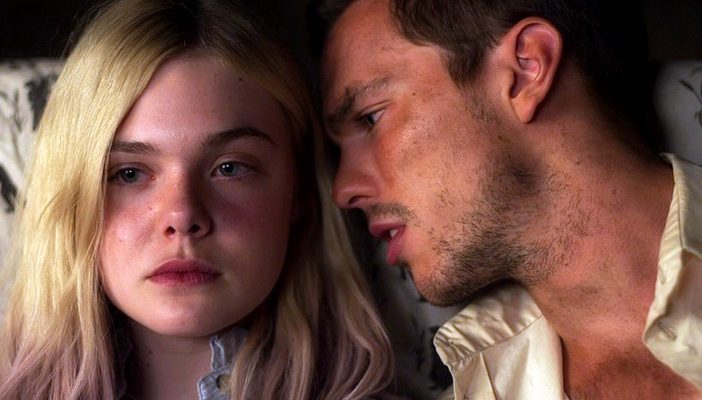 This is a reprint of our review from the 2014 Sundance Film Festival.
This is a reprint of our review from the 2014 Sundance Film Festival.
In the not so distant future, a catastrophic drought has ravaged the United States turning it into an arid dystopian wasteland. While citizens have migrated away from the most heavily affected and devastated areas, some of the more hard-bitten and prideful survivors have refused to leave their lands, clinging to barren plots and drying water wells in the hopes that rains will come again and replenish the parched landscape.
The hardened, shotgun-toting Ernest Holm (Michael Shannon) is one of these men. Resolute and stubborn, he protects his family—son Jerome (Kodi Smit-McPhee) and daughter Mary (Elle Fanning)—and water wells from invading bandits, and survives by trekking supplies to irrigation workers channeling the remaining water to tributaries of money and political influence. With resources precious, the cultural temperature is inhospitably dog eat dog. While severe on the outside, and battling demons from the past, Holm is also a charitable man, lending money and tools to the less fortunate (including Robbie, a local boy who begs on the streets for water, using his newborn child as manipulative bait).

However, the patriarch’s generosity doesn’t extend to Flem Lever (Nicholas Hoult, in his finest performance to date), a contemptuous young man, embittered by the fact that the government took part of his father’s lands and portioned them off to Holm when times were tough. Now with his own father struggling (or at least not as rich as they once were), Flem is obsessed with the land they lost rather than cultivating the territory they still own. Worse, Flem has eyes not only for the young and impressionable Mary, but seemingly Holm’s small kingdom as well. A showdown is all but inevitable.
Influenced by the short stories of S.E. Hinton, writer/director Jake Paltrow’s “Young Ones” has an unconventional but effective narrative chaptered into three parts, each centering one character; beginning with Holm, then Flem and then finally, Jerome. And while the sci-fi veneer does evince traces of an early Spielberg influence at times, the dusty picture is actually much more of an modern day western disguised within a futuristic milieu. Evoking dust-bowl struggles and Americana sensibilities (songs by Willie Nelson and Kris Kristofferson pepper a wonderfully evocative soundtrack), “Young Ones” creates a unique hybrid of genres.

Perhaps most fascinating about the movie is its three-tiered baton pass from protagonist to protagonist (all of them types of different patriarchs). Exploring themes of blame, sin, guilt, lies and violence, as the title suggests, “Young Ones” tackles notions of what our kin inherit, and the baggage passed down from generation to generation. Thoughtful and well-considered, Paltrow’s film is most effective when meditating on these textures, that take on the look and feel of Greek tragedy, while also investigating the classic western motif of revenge.
But maybe the most inimitable, but inconspicuous themes of the film, is that of omniscient judgment, sentience and the silent voyeur. One key character in the film is a robotic mule, replacing a real life donkey that died earlier in an accident. Feebly plodding away on all fours as it routes supplies for the various men in the picture, this pathetic robotic creature takes on anthropomorphic qualities as the audience begins to empathize with it and all the terrible acts of violence it silently witnesses. Certainly influenced by the similarly-themed donkey in Robert Bresson’s “Au Hazard Balthazar,” while perhaps not as extremely moving as that deeply tragic movie, Paltrow effectively borrows from an inspired source.

Many of the film’s ethereal cinematic elements only help. The ragged geography and the yellow-tinged photography of the film (shot in the gorgeous deserts of South Africa) is beautifully baked and striking. Composer Nathan Johnson’s mesmeric score is also deeply expressive, at times extremely cinematic like John Williams work, and yet moody, ambient and abstract, depending on what chapter the narrative takes place. And overall, Paltrow creates a deeply unique world, one that is fully realized, and that he never waivers from.
“Young Ones” and its serious, bone-dry approach won’t be for everyone. The picture is languidly paced, but its ideas, moods and tones strike many thought-provoking chords. But even more, amongst the many films vying for attention in a busy festival schedule, it’s one I’m still thinking about, chewing on and lingering in my head. [B+]

